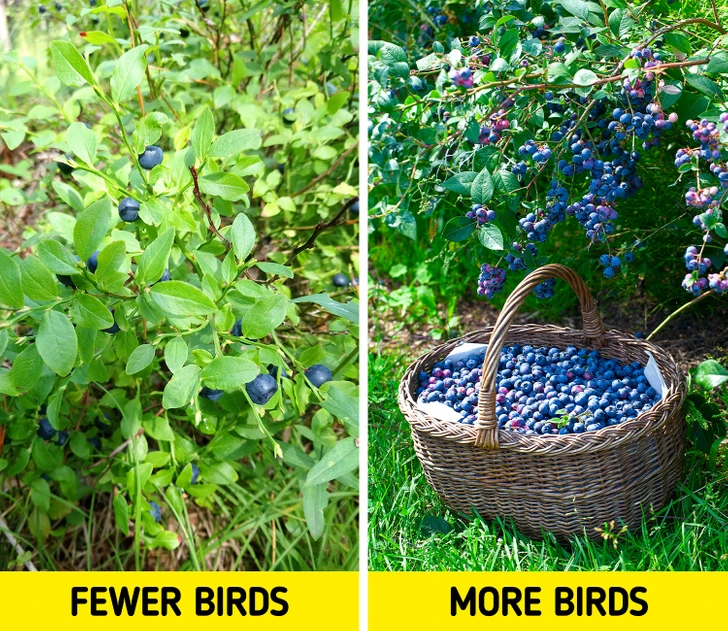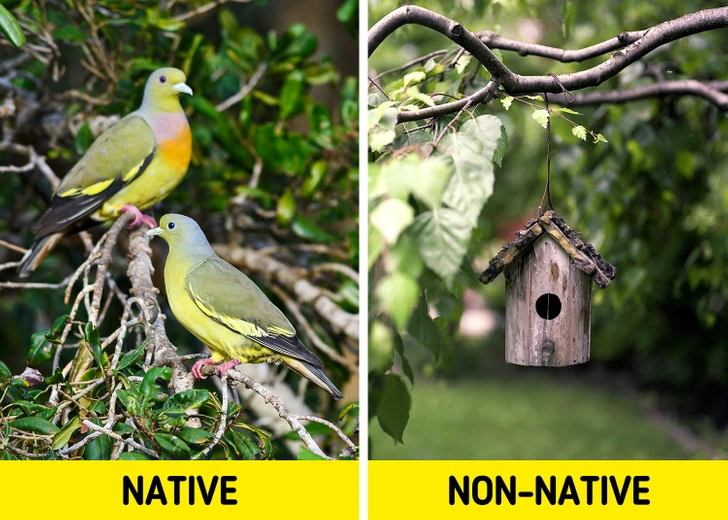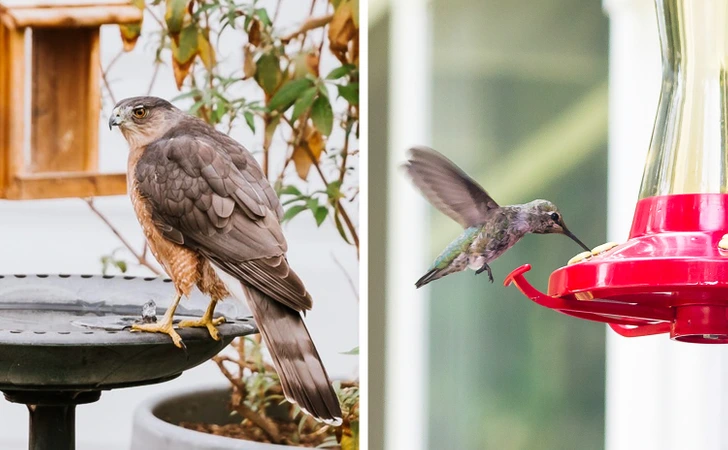Many bird species are struggling due to habitat loss caused by climate change and human activities. Birds play a crucial role in ecosystems by controlling pests, spreading seeds, and pollinating plants. If you have a garden, you can make it more welcoming for birds with a few thoughtful changes. Here are some tips to help you create a bird-friendly environment:
1. Plant Small Trees and Shrubs in Clumps

Grouping trees and shrubs together can enhance the visibility of their fruits and berries, making them more attractive to birds. Avoid planting in rows to mimic a more natural setting.
2. Create Habitat Layers

Mimicking natural habitats can attract a variety of bird species. Plant large trees for the upper layer, followed by smaller trees and shrubs, flowers, and ground cover like grass and fallen leaves.
3. Choose Native Plants

Native plants are adapted to your local climate and provide the right food and shelter for local bird species. They support birds with insects, berries, nuts, and seeds, and can also offer nectar if you include flowering plants.
4. Add Bird Feeders

Supplement the natural food sources in your garden with bird feeders. These are especially valuable in winter or during food shortages. Feeders can also increase the likelihood of young birds surviving.
5. Provide Water Sources

Birds need water for drinking and bathing. In addition to any ponds, consider adding bird baths. Ensure they are placed in sheltered spots and keep them clean and filled regularly.
6. Create Nesting Sites

Install birdhouses or nesting boxes in sheltered locations away from feeders. You can also plant conifers or other dense shrubs to offer natural nesting sites.
7. Avoid Pesticides

Minimize or eliminate pesticide use to protect birds from harmful chemicals. Pesticides can poison birds directly or contaminate their food sources. Bugs are also important for a bird-friendly garden.
8. Reduce Lawn Area

Large lawns offer minimal food and shelter for birds. Consider reducing the lawn size and replacing it with a variety of native plants that better support birds and other wildlife.
9. Keep Dead Trees and Branches

Dead trees and branches can serve as perching spots, nesting sites, and habitat for insects that birds feed on. They can also be used to attach birdhouses.
10. Utilize Your Roof

If you have a flat roof, you can create a rooftop garden with pots and containers for plants and a water source. This can offer birds a safe place away from ground predators.
Implementing these changes can help support local bird populations and create a thriving environment for them in your garden.